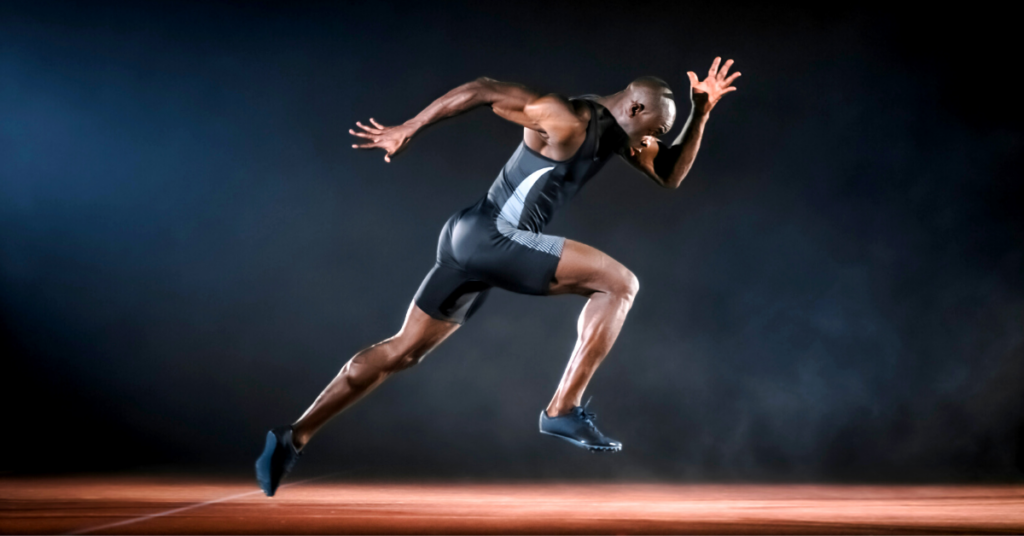In the world of sports, injury prevention is a top priority for athletes of all levels. One crucial aspect of injury prevention is the careful selection of appropriate sports equipment.
By choosing the right equipment, athletes can significantly reduce their risk of injuries and enhance their performance on the field. In this article, we will explore the importance of equipment selection for injury prevention and provide guidance on choosing the right equipment to safeguard athletes’ well-being.
Understanding the Importance of Equipment Selection for Injury Prevention
The Role of Proper Equipment in Injury Prevention
Properly selected sports equipment plays a vital role in protecting athletes from injuries. Equipment such as footwear, protective gear, and specialized gear provides essential support, stability, and impact absorption, minimizing the risk of injuries during training and competition. By providing the right level of support and protection, well-designed equipment can help athletes perform optimally and reduce the strain on their bodies.
The Impact of Inappropriate Equipment on Injury Risk
On the other hand, using inappropriate or poorly fitting equipment can significantly increase the risk of injuries. Ill-fitting shoes, inadequate protective gear, or outdated equipment may fail to provide the necessary support and protection, leaving athletes vulnerable to injuries. Moreover, equipment that is not designed for specific sports or fails to meet safety standards can pose additional risks, compromising an athlete’s safety and performance.
Key Considerations for Equipment Selection
When it comes to selecting sports equipment for injury prevention, several key factors should be considered. These considerations ensure that athletes choose equipment that is suitable for their sport, provides proper fit and support, meets safety standards, and promotes optimal performance.
Sports-Specific Equipment Requirements
Different sports have specific equipment requirements. Athletes must understand and adhere to these requirements to ensure they have the appropriate equipment for their chosen sport. Whether it’s protective gear, footwear, or specialized equipment, selecting items specifically designed for the demands of the sport is essential.
Proper Fit and Sizing
Proper fit and sizing are crucial when selecting sports equipment. Ill-fitting equipment can lead to discomfort, restricted movement, and increased injury risk. Athletes should carefully follow size charts and try on equipment to ensure a snug and secure fit. Properly fitted equipment should allow for a full range of motion while providing adequate support and protection.
Quality and Durability
Investing in high-quality equipment is essential for injury prevention. Quality equipment is designed to withstand the demands of the sport and provide long-lasting performance. Durable materials and construction ensure that the equipment maintains its integrity over time, reducing the risk of equipment failure and associated injuries.
Safety Standards and Certifications
When choosing sports equipment, athletes should look for safety certifications and standards. Equipment that meets recognized safety standards ensures that it has been tested for quality, performance, and safety. Certification labels or markings indicate that the equipment has met specific criteria, giving athletes confidence in their selection.
Equipment Maintenance and Inspection
Regular maintenance and inspection of sports equipment are crucial for injury prevention. Athletes should follow manufacturer guidelines for cleaning, maintenance, and replacement of worn-out equipment. Regularly inspecting equipment for signs of wear, damage, or malfunction can help identify potential issues before they lead to injuries.
Selecting the Right Footwear for Injury Prevention
Importance of Proper Footwear for Different Sports
Footwear is one of the most critical pieces of equipment for athletes across various sports. Different sports place unique demands on the feet, and selecting appropriate footwear can significantly reduce the risk of foot and lower limb injuries. Proper footwear provides support, cushioning, stability, and traction specific to the sport’s movements and playing surface.
Factors to Consider in Footwear Selection
When choosing footwear, athletes should consider several factors. These include the sport’s requirements, playing surface, foot type, and individual preferences. It is crucial to select footwear that matches the specific needs of the sport, such as cleats for soccer or running shoes with proper cushioning for distance running. Athletes with specific foot conditions or pronation issues may require specialized footwear or custom orthotics for additional support.
Common Foot Injuries and Footwear Solutions
Understanding common foot injuries can help athletes choose appropriate footwear solutions. Conditions such as plantar fasciitis, stress fractures, ankle sprains, and Achilles tendonitis can be mitigated or prevented with the right footwear. Shoes with proper arch support, cushioning, and stability features can help prevent overuse injuries, reduce impact forces, and promote proper foot alignment.
Choosing the Appropriate Protective Gear for Injury Prevention
Role of Protective Gear in Different Sports
Protective gear plays a crucial role in injury prevention in contact sports and high-risk activities. The purpose of protective gear is to minimize the risk of impact-related injuries, such as concussions, fractures, or soft tissue damage. Helmets, mouthguards, shin guards, pads, and other protective equipment provide an additional layer of protection during play.
Essential Protective Gear for Specific Sports
The specific protective gear required will vary depending on the sport. Athletes should research and adhere to the recommended protective gear guidelines for their sport. Sports such as football, hockey, and martial arts often require extensive protective gear, including helmets, face shields, mouthguards, shoulder pads, and padding. Even in non-contact sports, such as cycling or skateboarding, helmets and protective padding should be worn to prevent head and joint injuries.
Proper Fit and Functionality of Protective Gear
Ensuring the proper fit and functionality of protective gear is crucial for its effectiveness. Ill-fitting gear may not provide adequate protection or may restrict movement, hindering performance. Athletes should carefully follow sizing charts and guidelines provided by manufacturers. Adjustable straps, padding, and fasteners should be properly secured to ensure a secure and comfortable fit.
Evaluating Equipment for Impact Protection and Shock Absorption
Understanding Impact Forces and Their Effects on the Body
Athletes are often exposed to impact forces during sports activities. The repetitive impact can lead to injuries, especially in high-impact sports such as running, jumping, or contact sports. Equipment that provides effective impact protection and shock absorption can help minimize the strain on the body and reduce the risk of injuries.
Equipment Features for Impact Protection
When selecting equipment, athletes should look for features that enhance impact protection. This may include specialized padding, cushioning materials, or built-in shock absorption systems. Helmets with effective impact-absorbing liners, such as foam or gel, can protect against head injuries. Protective padding in key areas, such as knees, elbows, and shoulders, can absorb and distribute impact forces, reducing the risk of fractures or soft tissue injuries.
Selecting Equipment with Effective Shock Absorption
Equipment that offers effective shock absorption can help minimize the impact on joints and muscles. For example, running shoes with cushioned midsoles can absorb the shock generated during running, reducing the strain on the lower limbs. Similarly, sports-specific footwear or equipment with shock-absorbing features can help protect against joint injuries caused by repetitive impact.
Assessing Equipment for Proper Body Alignment and Support
Maintaining Proper Body Alignment to Reduce Injury Risk
Maintaining proper body alignment is crucial for injury prevention. Misalignment or poor posture can increase the risk of strains, sprains, and overuse injuries. Equipment that promotes proper body alignment and provides adequate support can help reduce the risk of such injuries.
Equipment Features for Body Alignment and Support
When selecting equipment, athletes should consider features that promote proper body alignment and support. This may include ergonomic designs, adjustable components, or braces that help maintain alignment and stability. Equipment with adequate support for joints, such as ankle braces or knee sleeves, can help prevent excessive movement and protect against injuries.
Selecting Equipment that Provides Optimal Support
Optimal support from equipment is essential, particularly for joints and vulnerable areas of the body. Athletes should choose equipment that provides the necessary support for their specific sport and individual needs. This may involve selecting gear with reinforced materials, adjustable straps, or specialized support systems to enhance stability and reduce the risk of joint-related injuries.
Conclusion
Selecting the right sports equipment is vital for injury prevention in athletes. By considering sports-specific requirements, proper fit, quality, safety standards, and equipment maintenance, athletes can minimize their risk of injuries and optimize their performance. From footwear selection to protective gear and equipment that offers impact protection and body alignment support, athletes can make informed choices that prioritize their safety and well-being.
By understanding the importance of equipment selection for injury prevention and implementing the recommended guidelines, athletes can enjoy their sports activities with confidence, knowing they have taken proactive steps to reduce their risk of injuries.
Frequently Asked Questions (FAQs)
1. How important is proper equipment selection for injury prevention in sports? Proper equipment selection is crucial for injury prevention in sports. It provides support, protection, and impact absorption, reducing the risk of injuries and enhancing performance.
2. What factors should athletes consider when selecting sports equipment? Athletes should consider sports-specific requirements, proper fit and sizing, quality and durability, safety standards and certifications, and equipment maintenance and inspection.
3. How can athletes choose the right footwear for injury prevention? Athletes should consider the sport’s requirements, playing surface, foot type, and individual preferences when selecting footwear. Proper arch support, cushioning, and stability features are essential for injury prevention.
4. What is the role of protective gear in injury prevention? Protective gear minimizes the risk of impact-related injuries in contact sports and high-risk activities. It provides an additional layer of protection during play.5. How can athletes assess equipment for impact protection and shock absorption? Athletes should look for equipment with specialized padding, cushioning materials, or built-in shock absorption systems to enhance impact protection and minimize the strain on the body.
Disclaimer: When it comes to sports gear & equipment, always seek professional guidance and advice from sports professionals who will be in a position to better address specific concerns or issues related to your individual situation. In no event shall we be liable for any direct, indirect, incidental, special, or consequential damages arising out of or in connection with your use of this website or the content provided herein.







